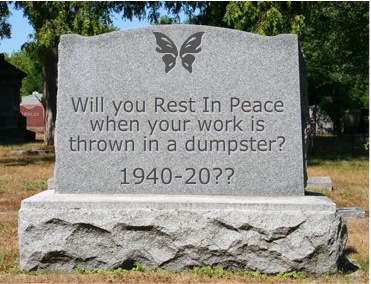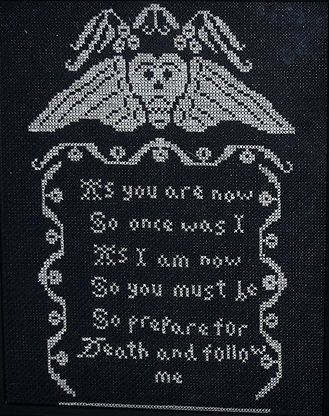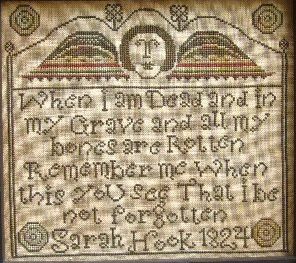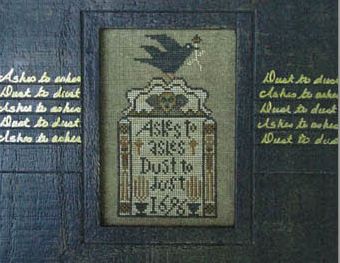Your Legacy: The Time is NOW
April 29, 2010
When you’re singing with the heavenly choir or back on earth as a reincarnated being or dancing with the dust in the cosmos, what will be the fate of your art? Will it rest in peace with a collector or lie in the limbo of storage or will your unexpressed desires haunt your survivors? Whether you’re an artist of a certain age or just a beginner, now is the time to start taking charge of the outcome.
When I offered condolences to the husband of a prominent sculptor who had died recently, I mentioned that her death was a loss to the art world. He responded that no one had yet come forth with an interest in the substantial body of work she had left. Uninvolved with the art world himself, he lacked access to resources that could help him rescue the work from dormancy. This is not a rare situation, but exemplifies the need for artists themselves to protect their legacies.
“Legacy” is now a hot topic that is being addressed at symposia and workshops within the art community. Many of these initiatives are coming from women’s art organizations. Sadly, a family is often unaware or unappreciative of a beloved female relative’s professional status as an artist.
“Etched in Memory: Legacy Planning for Artists,” a one-day symposium at Rutgers University* last spring, gathered a group of archivists, researchers, collectors, and artists’ survivors for an in-depth discussion of issues that surround artists estates. They warned listeners about the problems that arise when no information or instructions are given, and offered ways to avert them. Not every artist can launch a not-for-profit like Faith Ringgold’s Anyone Can Fly Foundation, but all should learn to keep accurate records.
Dr. Ferris Olin, Director, Institute for Women and Art at Rutgers, advised the symposium audience to establish orderly systems of documentation and plans for distribution of work. “Papers don’t deal death; they reflect life,” he said. (His presentation started with an attention-grabbing image of a basement filled with boxes veiled in spider webs.)
 “Understand that your work is important,” urged Ronald Becker of the Special Collections and University Archives at Rutgers University Libraries, citing the kinds of information needed by future curators and researchers. A basic factual description of a piece should include its title, date of execution, size, and—not only for historical interest but also if cleaning or mending is needed—materials and processes used. Also important are its exhibition history, documentation of its sale (to whom was it sold and the price), and, if possible, a photograph.
“Understand that your work is important,” urged Ronald Becker of the Special Collections and University Archives at Rutgers University Libraries, citing the kinds of information needed by future curators and researchers. A basic factual description of a piece should include its title, date of execution, size, and—not only for historical interest but also if cleaning or mending is needed—materials and processes used. Also important are its exhibition history, documentation of its sale (to whom was it sold and the price), and, if possible, a photograph.
Published references such as reviews and articles on the artist and artwork, exhibition catalogs, and show announcements as well as oral histories serve as valuable testimony on a career. Sketchbooks and diaries tracing the gestation and development of ideas help place artworks in context. Since digital files can be transient as technology advances, hard copy backups are essential.
The Smithsonian’s Archives of American Art ( http://www.aaa.si.edu/ ) is the best-known repository for documentary materials from artists. However, numerous other archives of artists’ records exist. WAAND (Women Artists Archives National Directory ( http://waand.rutgers.edu ) is an online directory of collections of primary source materials by and about women visual artists active in the US since 1945.
Not only artists with large reputations whose work might belong in major museums, but also those with more modest followings should envision where they want their work to go. Many specialized museums welcome donations—for example, some state or regional museums collect work by residents and many university museums have focused collections.
“Don’t rely on family members to dispose of work,” advised Richard Greenberg, an attorney specializing in estate planning. Artists’ wills should provide for their art, and be specific regarding each piece. You can set particular conditions, he said—e.g., asking that a gift not be sold. He strongly recommended that artists give things away while they’re alive to prevent entanglements with estate taxes.
The good news is that help is available. The Joan Mitchell Foundation, for example, has published a Visual Artist Career Documentation Assessment form. This will be available online at www.joanmitchellfoundation.com when the site’s reconstruction is completed (predictably, in Fall 2010). Meanwhile an e-request to Christa Blatchford ( cblatchford@joanmitchellfoundation.org ) will bring one to your inbox.
A “Visual Artist’s Guide to Estate Planning. 2008 Supplement Update” edited by Barbara Hoffman, is an online resource published by the Marie Walsh Sharpe Art Foundation—see www.sharpeartfdn.org/supplement/supplement08.htm.
Googling “Estate Planning for Artists” produces numerous other resources including http://www.artisthelpnetwork.com, which provides a bibliography plus a list of organizations that offer assistance.
* “Etched in Memory: Legacy Planning for Artists”, March 20, 2009, was organized by the Institute for Women & Art at Rutgers (http://iwa.rutgers.edu/).
__________________________________________________________________________________
Patricia Malarcher is Editor of the Surface Design Journal and a studio artist who has exhibited internationally.







1 Comment
Tweets that mention When you’re singing with the heavenly choir...what will be the fate of your art? -- Topsy.com says
June 2, 2010 at 7:01 am
[...] This post was mentioned on Twitter by Gloria Hansen, Valerie Kamikubo. Valerie Kamikubo said: RT @gloriahansen: When you’re singing with the heavenly choir...what will be the fate of your art? http://bit.ly/d6NCk3 [...]
Related Blog Articles
Business
Friday Fibers Roundup: Geometry (Nature + Tech)
Business
Friday Fibers Roundup: Humor and the Abject
Business
“Weaving and Knowing” by Patricia Malarcher